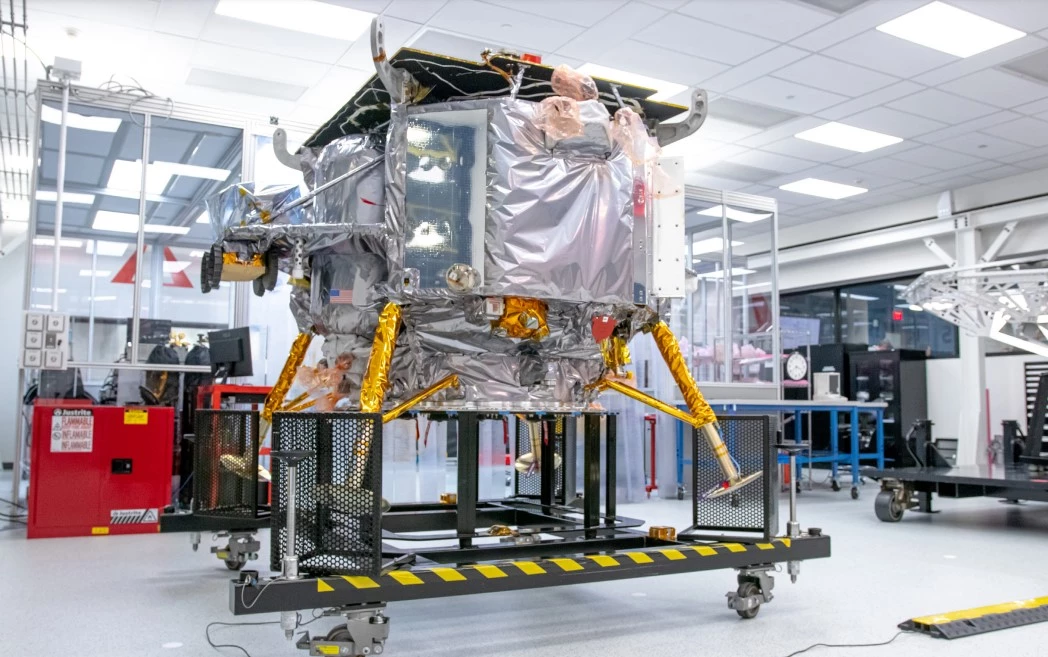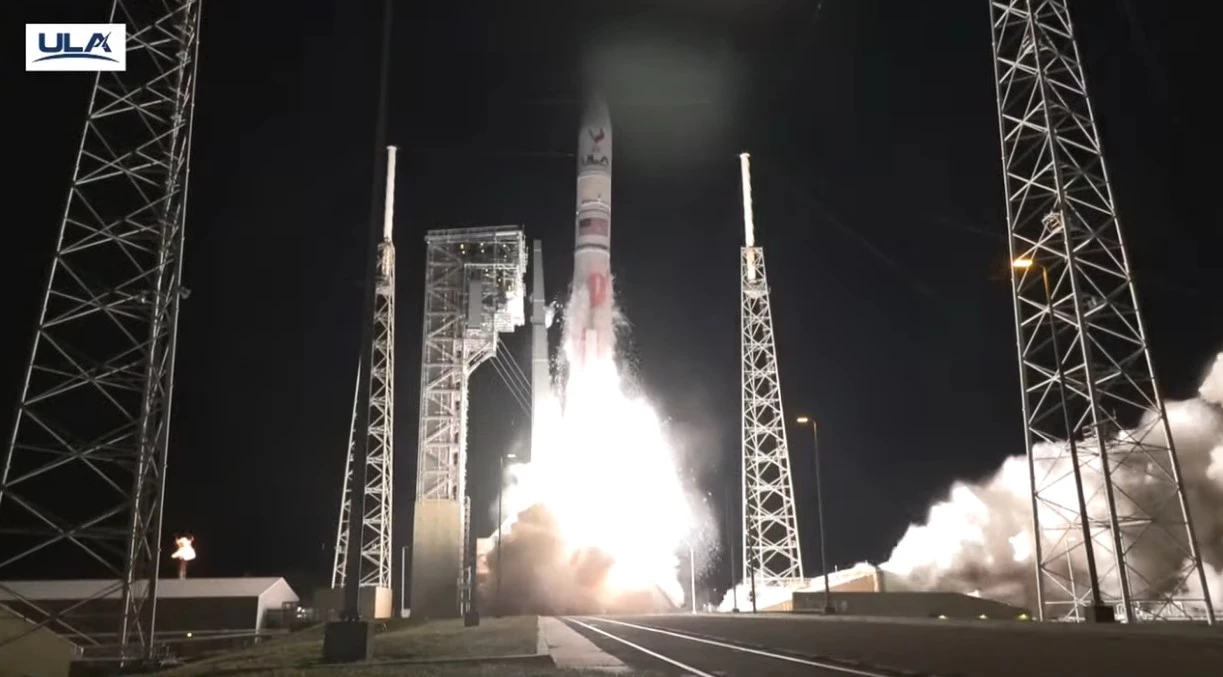The first US Moon landing mission in 52 years is on its way after Astrobotic’s Peregrine Mission One (PM1) lifted off this morning from Launch Complex-41 at Cape Canaveral Space Force Station in Florida atop a ULA Vulcan rocket at 2:18 am EST.
Under cloudy skies, the launch of PM1 took place without major delays or incidents. At one minute 16 seconds into the flight, the Vulcan/Centaur launcher reached maximum dynamic pressure. Reaching the one-minute-50-second mark, the solid rocket boosters separated from the Vulcan core stage. At the four-minute-59 second mark, the two first stage liquid fuel engines shut down, with stage separation following six seconds later.
The second stage then ignited and burned for two additional engine burns. After the Centaur stage shut down, the Peregrine spacecraft separated at 50 minutes into the flight.
The Centaur stage then fired again, sending it into a heliocentric orbit where it deployed the Celestis Memorial Spaceflight’s "Enterprise Flight" payload, which carries the cremated remains or DNA of a number of celebrities, including Gene and Majel Roddenberry, Nichelle Nichols, DeForest Kelley, and James Doohan. Peregrine also has the remains or DNA of 66 other individuals as part of the Celestis "Tranquility Flight" to the lunar surface.

As the Peregrine lander's systems powered up, contact was established with Astrobotic’s Mission Control Center, which will oversee operations from now on as Peregrine embarks on its 17-to-19-day cruise phase to lunar orbit during which it will orbit the Earth once before inserting into a lunar transfer orbit.
On reaching lunar orbit, Peregrine will carry out a series of orbital maneuvers to bring it closer to the lunar surface for up to 39 days until it gets the green light to land sometime in February 2024 at Sinus Viscositatis next to the Gruithuisen Domes on the northeast border of Oceanus Procellarum. This is an area of particular interest to geologists and it is hoped that the domes, which were formed out of granite-like substances, may shed light on the presence of water under the lunar surface or trapped in minerals.

Also onboard Peregrine are 20 payloads. Five of these are NASA experiments sent as part of the Artemis program and 15 more from international organizations. One of these is the Iris Lunar Rover built by Carnegie Mellon University. This means the PM1 is not only the first US lunar landing mission in over half a century and the first using a privately owned and operated spacecraft, it is also the first American mission to carry a lunar robotic rover.
The video below recaps the launch of PM1.
Source: Astrobotic






